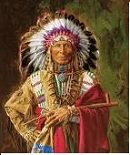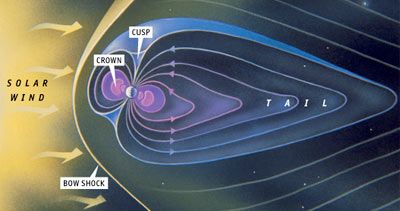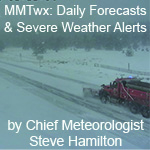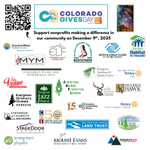- Posts: 15745
- Thank you received: 320
Science Odds and Ends
- ScienceChic
-
 Topic Author
Topic Author
- Mountain Champion
-

This isn't visualization, it's writing about abstract fears and anxieties pertaining to an upcoming event. They aren't trying to imagine themselves doing better, they are merely explicitly putting in concrete form their emotional worries about their upcoming performance, rather than leave them amorphously floating in their minds. The normal assumption is that how well one does on a test directly correlates with one's depth of facts and understanding of a topic; that if you are well-prepared, then there is no need to worry. Of those who do understand the material and still have inexplicable testing anxieties, why would writing about one's fears help at all? That is the deeper question. And that's why studies are done, because assumptions can be utterly wrong, and previous attempts to help those with testing anxieties haven't been effective enough.major bean wrote:
Visualization has helped many people in all different endeavors since day one. Athletes, artists, students, etc. It is surprising that it needs to be tested again. But I guess that scientists will not accept that a number two pencil marks more darkly than a number 3 without a study.Science Chic wrote: For those of you with kids who have testing anxieties - try this next time!
http://www.sciencemag.org/content/331/6014/211.abstract
Writing About Testing Worries Boosts Exam Performance in the Classroom
Gerardo Ramirez and Sian L. Beilock*
Science 14 January 2011:
Vol. 331 no. 6014 pp. 211-213
DOI: 10.1126/science.1199427We tested whether having students write down their thoughts about an upcoming test could improve test performance. The intervention, a brief expressive writing assignment that occurred immediately before taking an important test, significantly improved students’ exam scores, especially for students habitually anxious about test taking. Simply writing about one’s worries before a high-stakes exam can boost test scores.
"Now, more than ever, the illusions of division threaten our very existence. We all know the truth: more connects us than separates us. But in times of crisis the wise build bridges, while the foolish build barriers. We must find a way to look after one another as if we were one single tribe.” -King T'Challa, Black Panther
The truth is incontrovertible. Malice may attack it. ignorance may deride it, but in the end, there it is. ~Winston Churchill
Please Log in or Create an account to join the conversation.
- ScienceChic
-
 Topic Author
Topic Author
- Mountain Champion
-

- Posts: 15745
- Thank you received: 320
I think this will all be freely available, but if it isn't and you'd like a copy, let me know.
http://www.sciencemag.org/site/extra/genomeanniversary/
In February 2001, Science and Nature published two papers that provided the first detailed look at the nearly complete sequence of the human genome. Science is pleased to present a special month-long series celebrating the 10th anniversary of that momentous achievement, including News features and brief essays that explore the impacts of the genomics revolution on science and society.
4 February 2011
Editorial
Lessons from Genomics http://www.sciencemag.org/content/331/6017/511.short
B. Alberts
News Focus
Waiting for the Revolution http://www.sciencemag.org/content/331/6017/526.short
E. Marshall
Human Genetics in the Clinic, One Click Away http://www.sciencemag.org/content/331/6017/528.short
E. Marshall
The Human Genome (Patent) Project http://www.sciencemag.org/content/331/6017/530.short
S. Kean
Online ExtraScience Podcast http://www.sciencemag.org/content/331/6017/625.2.full
The 4 February show includes several genome-related segments, including highlights from this series and a discussion about the water flea genome.
Essays
Introduction: A Celebration of the Genome, Part I http://www.sciencemag.org/content/331/6017/546.1.short
B. R. Jasny and L. M. Zahn
Faces of the Genome http://www.sciencemag.org/content/331/6017/546.2.short
F. S. Collins
The Human Genome at 10: Successes and Challenges http://www.sciencemag.org/content/331/6017/546.3.short
J. C. Venter
The Golden Age of Human Population Genetics http://www.sciencemag.org/content/331/6017/547.1.short
M. Przeworski
Genomics and Clinical Relevance http://www.sciencemag.org/content/331/6017/547.2.short
T. Hudson
What Defines Us? http://www.sciencemag.org/content/331/6017/548.1.short
R. Cole-Turner
As a theologian, I am sometimes asked: What, then, does it mean to be human? If I ever knew the answer, I am becoming less clear all the time, thanks in part to discoveries related to the human genome. The irony is discomforting. As we gain precision, we seem to be losing conceptual clarity.
The “human” genome, it turns out, consists of sequences that are widely shared across the evolutionary tree. The microbes inside us, outnumbering our human cells ten to one, have their own genomes that interact with our DNA, contributing to our individual and species identity. Comparisons between the human genome and that of other primates, such as chimpanzees, suggest that the boundary of our much-vaunted human “uniqueness” is thin indeed. The sequence of a major portion of Neandertal DNA can now be compared with our own, and we are learning that Neandertals are hardly extinct, their DNA living on in many of us. Tantalizing discoveries now suggest that we once shared the planet with the newly discovered Denisova hominin, which appears to have interbred with some of our ancestors as recently as 40,000 years ago.
The Human Genome Project undermines cherished ideas about human uniqueness. But it also hints at a new vision of humanity. We are less clearly defined than we once thought, less set apart from the rest of life, but uniquely able to probe the data and ponder the questions. And, being humans, we let our discomfort give way to wonder. Who are we, and where will we go next?
Painting the Genome for the Public http://www.sciencemag.org/content/331/6017/548.2.short
X. Cortada
Bringing Genomics and Genetics Back Together http://www.sciencemag.org/content/331/6017/548.3.short
R. A. Gibbs
"Now, more than ever, the illusions of division threaten our very existence. We all know the truth: more connects us than separates us. But in times of crisis the wise build bridges, while the foolish build barriers. We must find a way to look after one another as if we were one single tribe.” -King T'Challa, Black Panther
The truth is incontrovertible. Malice may attack it. ignorance may deride it, but in the end, there it is. ~Winston Churchill
Please Log in or Create an account to join the conversation.
- major bean
-

- Mountain Legend
-

- Posts: 2612
- Thank you received: 0
Writing about the fears is a byproduct. You cannot consider your fears or anxieties without visualization. THAT is impossible unless you are Helen Keller.Science Chic wrote:
This isn't visualization, it's writing about abstract fears and anxieties pertaining to an upcoming event. They aren't trying to imagine themselves doing better, they are merely explicitly putting in concrete form their emotional worries about their upcoming performance, rather than leave them amorphously floating in their minds. The normal assumption is that how well one does on a test directly correlates with one's depth of facts and understanding of a topic; that if you are well-prepared, then there is no need to worry. Of those who do understand the material and still have inexplicable testing anxieties, why would writing about one's fears help at all? That is the deeper question. And that's why studies are done, because assumptions can be utterly wrong, and previous attempts to help those with testing anxieties haven't been effective enough.major bean wrote:
Visualization has helped many people in all different endeavors since day one. Athletes, artists, students, etc. It is surprising that it needs to be tested again. But I guess that scientists will not accept that a number two pencil marks more darkly than a number 3 without a study.Science Chic wrote: For those of you with kids who have testing anxieties - try this next time!
http://www.sciencemag.org/content/331/6014/211.abstract
Writing About Testing Worries Boosts Exam Performance in the Classroom
Gerardo Ramirez and Sian L. Beilock*
Science 14 January 2011:
Vol. 331 no. 6014 pp. 211-213
DOI: 10.1126/science.1199427We tested whether having students write down their thoughts about an upcoming test could improve test performance. The intervention, a brief expressive writing assignment that occurred immediately before taking an important test, significantly improved students’ exam scores, especially for students habitually anxious about test taking. Simply writing about one’s worries before a high-stakes exam can boost test scores.
Regards,
Major Bean
Please Log in or Create an account to join the conversation.
- major bean
-

- Mountain Legend
-

- Posts: 2612
- Thank you received: 0
Well, duh! But at the time the science types were all agog with it. Most today still cling to the idea. Some still reference this idea in their posts whenever it suits their argument and takes blame from themselves.Science Chic wrote: Human Genome 10th Anniversary. It seems like yesterday when it was published. There was so much promise, and still is some, but has been muted over the years with increased understanding that our genomes are not the be-all, end-all of who we are and how well we live our lives.
I think this will all be freely available, but if it isn't and you'd like a copy, let me know.
http://www.sciencemag.org/site/extra/genomeanniversary/
In February 2001, Science and Nature published two papers that provided the first detailed look at the nearly complete sequence of the human genome. Science is pleased to present a special month-long series celebrating the 10th anniversary of that momentous achievement, including News features and brief essays that explore the impacts of the genomics revolution on science and society.
4 February 2011
Editorial
Lessons from Genomics http://www.sciencemag.org/content/331/6017/511.short
B. Alberts
News Focus
Waiting for the Revolution http://www.sciencemag.org/content/331/6017/526.short
E. Marshall
Human Genetics in the Clinic, One Click Away http://www.sciencemag.org/content/331/6017/528.short
E. Marshall
The Human Genome (Patent) Project http://www.sciencemag.org/content/331/6017/530.short
S. Kean
Online ExtraScience Podcast http://www.sciencemag.org/content/331/6017/625.2.full
The 4 February show includes several genome-related segments, including highlights from this series and a discussion about the water flea genome.
Essays
Introduction: A Celebration of the Genome, Part I http://www.sciencemag.org/content/331/6017/546.1.short
B. R. Jasny and L. M. Zahn
Faces of the Genome http://www.sciencemag.org/content/331/6017/546.2.short
F. S. Collins
The Human Genome at 10: Successes and Challenges http://www.sciencemag.org/content/331/6017/546.3.short
J. C. Venter
The Golden Age of Human Population Genetics http://www.sciencemag.org/content/331/6017/547.1.short
M. Przeworski
Genomics and Clinical Relevance http://www.sciencemag.org/content/331/6017/547.2.short
T. Hudson
What Defines Us? http://www.sciencemag.org/content/331/6017/548.1.short
R. Cole-TurnerAs a theologian, I am sometimes asked: What, then, does it mean to be human? If I ever knew the answer, I am becoming less clear all the time, thanks in part to discoveries related to the human genome. The irony is discomforting. As we gain precision, we seem to be losing conceptual clarity.
The “human” genome, it turns out, consists of sequences that are widely shared across the evolutionary tree. The microbes inside us, outnumbering our human cells ten to one, have their own genomes that interact with our DNA, contributing to our individual and species identity. Comparisons between the human genome and that of other primates, such as chimpanzees, suggest that the boundary of our much-vaunted human “uniqueness” is thin indeed. The sequence of a major portion of Neandertal DNA can now be compared with our own, and we are learning that Neandertals are hardly extinct, their DNA living on in many of us. Tantalizing discoveries now suggest that we once shared the planet with the newly discovered Denisova hominin, which appears to have interbred with some of our ancestors as recently as 40,000 years ago.
The Human Genome Project undermines cherished ideas about human uniqueness. But it also hints at a new vision of humanity. We are less clearly defined than we once thought, less set apart from the rest of life, but uniquely able to probe the data and ponder the questions. And, being humans, we let our discomfort give way to wonder. Who are we, and where will we go next?
Painting the Genome for the Public http://www.sciencemag.org/content/331/6017/548.2.short
X. Cortada
Bringing Genomics and Genetics Back Together http://www.sciencemag.org/content/331/6017/548.3.short
R. A. Gibbs
Regards,
Major Bean
Please Log in or Create an account to join the conversation.
- ScienceChic
-
 Topic Author
Topic Author
- Mountain Champion
-

- Posts: 15745
- Thank you received: 320
http://www.nature.com/news/2011/110208/ ... id=FBK_NPG
Gene reading steps up a gear
Third-generation sequencing machines promise to make their mark one molecule at a time.
Heidi Ledford
Published online 8 February 2011 | Nature | doi:10.1038/470155a
All eyes are on these machines. Pacific Biosciences set a high bar for its own success in 2008, when chief technology officer Stephen Turner boasted that the instruments would be able to sequence a human genome in just 15 minutes by 2013, compared with the full month it took at that time. This year, as researchers unveiled data from the first machines to leave the company's campus, the discussion was less about revolutionizing the field and more about niche applications.
After several delays, customers have now been told to expect their machines in the second quarter of this year.
Pacific Biosciences' machines are also fast. In a paper published online in December, Schadt and his team used them to trace the origin of the ongoing cholera outbreak in Haiti by sequencing the genomes of five strains of Vibrio cholerae (C. S. Chin et al. N. Engl. J. Med. 364, 33–42; 2011). The team sequenced all five strains in less than an hour. It takes about a week to complete a 150-base sequencing run on an Illumina sequencer.
"Now, more than ever, the illusions of division threaten our very existence. We all know the truth: more connects us than separates us. But in times of crisis the wise build bridges, while the foolish build barriers. We must find a way to look after one another as if we were one single tribe.” -King T'Challa, Black Panther
The truth is incontrovertible. Malice may attack it. ignorance may deride it, but in the end, there it is. ~Winston Churchill
Please Log in or Create an account to join the conversation.
- LOL
-

- Mountain Legend
-

- Posts: 6393
- Thank you received: 18
Magnetic Polar Shifts Causing Massive Global Superstorms!
Now "it" is here: an unstoppable magnetic pole shift that has sped up and is causing life-threatening havoc with the world's weather.
Maybe this is why it has been so dang cold lately!
Better stock up on firewood and Beer!
http://www.salem-news.com/articles/febr ... rms-ta.php
If you want to be, press one. If you want not to be, press 2
Republicans are red, democrats are blue, neither of them, gives a flip about you.
Please Log in or Create an account to join the conversation.
- ScienceChic
-
 Topic Author
Topic Author
- Mountain Champion
-

- Posts: 15745
- Thank you received: 320
"Now, more than ever, the illusions of division threaten our very existence. We all know the truth: more connects us than separates us. But in times of crisis the wise build bridges, while the foolish build barriers. We must find a way to look after one another as if we were one single tribe.” -King T'Challa, Black Panther
The truth is incontrovertible. Malice may attack it. ignorance may deride it, but in the end, there it is. ~Winston Churchill
Please Log in or Create an account to join the conversation.
- ScienceChic
-
 Topic Author
Topic Author
- Mountain Champion
-

- Posts: 15745
- Thank you received: 320
http://news.sciencemag.org/sciencenow/2 ... tml?ref=hp
The Staph Bug's Achilles' Heel
by Carrie Arnold on 10 February 2011
Staphylococcus aureus is a hard bug to kill. The bacterium is responsible for more U.S. deaths each year than HIV/AIDS, in part because it quickly develops resistance to antibiotics. Scientists have had a hard time figuring out how it ticks, but now researchers think they may have found a way to conquer S. aureus by blocking its ability to perform a critical task: recycling.
Recycling is so important that even bacteria do it. Blocking the activity of a protein known as RnpA stopped the recycling, indicating that Dunman's team had found a key enzyme. Toward that end, the team screened nearly 30,000 small molecules to identify compounds that inhibit the action of RnpA. The researchers found 14 that did the trick, but one molecule—named RNPA1000—was especially effective against S. aureus. RNPA1000 killed cells from all 12 major strains of methicillin-resistant S. aureus (MRSA), a major scourge of hospitals in the United States and elsewhere. It was also effective against strains of antibiotic-resistant, gram-positive Streptococcus pneumoniae, S. pyogenes, and Enterococcus faecium, which cause diseases from meningitis to cardiac infections.
The team showed that RNPA1000 can boost the potency of antibiotics already on the market, although they don't yet know how. The chemical also kills S. aureus biofilms, which are a common cause of infection on implanted catheters and other medical devices and are notoriously resistant to the actions of antibiotics.
RNPA1000 did show some toxicity when applied at high doses in human cells, so Dunman's group is searching for compounds closely related to RNPA1000 that can still inhibit RnpA but without the toxic side effects.
I love developmental biology research - it's one of the most complex fields, yet most intriguing! Being able to track where a small group of cells migrates and grows into from blastula to fetus to infant is astonishing and humbling; how organisms form is a study of beauty and awe!
http://news.sciencemag.org/sciencenow/2 ... tml?ref=hp
Dinos Gave Birds the Finger
by Elizabeth Pennisi on 10 February 2011
Some say it's the last holdout for a handful of scientists still not convinced that birds evolved from dinosaurs. The fingers of the two groups of animals, they say, just don't match up. As embryos, birds seem to develop the equivalent of our middle three fingers, but theropods—two-legged, primarily carnivorous dinosaurs from which birds are thought to have evolved—sport the equivalent of our thumb, index, and middle fingers. Now, a study of chick embryos shows that birds do indeed have thumb, index, and middle "fingers" in their wings.
"This very important paper is the final nail in the coffin for the remaining supporters of the nondinosurian origin of birds," says Kasper Lykke Hansen, a vertebrate zoologist at the University of Copenhagen.
The flap over bird fingers has been going on for more than a century. Given how evolution proceeds, birds should have the same fingers as their dino ancestors, but that's not what some researchers have found. evolutionary developmental biologist Günter Wagner and paleontologist Jacques Gauthier, both of Yale University, analyzed birds and dinos and concluded that even if the fingers didn't match, birds still evolved from dinosaurs. They share many skeletal features, such as hollow bones, as well as feathers and nest-building behaviors. To explain the discrepancy in the fingers, they proposed a compromise. Early in development, the avian hand looked to have the middle three digits. But by the end of development, the cells in the middle three finger positions changed their plans, growing into thumb, index, and middle digits instead.
In a paper published online today in Science, Koji Tamura, a developmental biologist at Tohoku University in Sendai, Japan, his graduate student Naoki Nomura, and their colleagues looked into this possibility. They transplanted embryonic tissue from the legs to the wings of 3½-day-old developing chicks and vice versa and watched how the transplanted tissue developed. Then they labeled cells in even earlier embryos to track where they wound up.
Next, the researchers labeled cells in 3-day-old embryos and followed where they wound up in the chick. They discovered that cells destined to become the middle-finger digit in the wing started in the organizer. If they had stayed put, they might have given rise to the ring-finger digit. Instead, they migrated beyond the organizer's boundaries to a position where, later on, high concentrations of sonic hedgehog turned them into the middle finger. This fits with Wagner and Gauthier's scenario, notes Tamura.
And we gain even deeper understanding of our ancestors...
http://news.sciencemag.org/sciencenow/2 ... tml?ref=hp
Lucy Had a Spring in Her Step
by Ann Gibbons on 10 February 2011
The petite 3.2-million-year-old skeleton called Lucy is one of the most famous and most complete of human ancestors. But she was found without her foot bones, so researchers have debated whether she walked as we do or retained some apelike adaptations for climbing in trees that altered her gait. Now, a 3.2-million-year-old foot bone from a member of Lucy's species, Australopithecus afarensis, reveals that this hominin was no flat foot: It had already evolved arches and a stiff midfoot similar to living humans. That means if Lucy were alive today, she could fit in high heels or march for miles without breaking her feet. "This discovery puts the spring back into afarensis's step," says co-author Donald Johanson of the Institute of Human Origins at Arizona State University (ASU), Tempe.
When Johanson and his colleagues discovered Lucy's partial skeleton in 1974, it showed that she walked upright, confirming that our ancestors did so before their brains started getting larger. But did she walk upright most of the time like a modern human or still spend plenty of time in the trees evading predators? Now, researchers think they've solved the mystery of Lucy's footwork, thanks to an analysis of about 35 new individuals of A. afarensis uncovered at Hadar, Ethiopia, in the past 15 years. The key is the fourth metatarsal, a long bone that connects the toe to the rest of the foot. The way the two ends of the bone were twisted in relation to each other in the fossils suggests that when one end was on the ground, the other end was raised about 8˚ to attach to the rest of the foot, says lead author Carol Ward, a paleoanthropologist at the University of Missouri, Columbia, in a study reported online today in Science. This torsion is found in feet with well-formed arches, which are stiff enough to use the foot like a lever to push off the ground but flexible enough to also work like shock absorbers.
The bone also shows that A. afarensis had abandoned the flexible midfoot that apes use to grasp tree branches, in favor of an arch that makes upright walking more efficient. "This tells you that climbing in the trees was not nearly as important as walking on the ground," says Ward.
Paleoanthropologist Will Harcourt-Smith of the American Museum of Natural History in New York City isn't willing to go that far. Although he agrees that A. afarensis had some arching, it may have lacked the most important arching on the inside of the foot. Lucy's fingers and toes also were more curved than those of living humans and her shoulder was more apelike—traits useful for tree-climbing. But paleoanthropologist Jeremy DeSilva of Boston University says that the new foot bone, along with a "laundry list of other features of the lower limb" make it more likely that A. afarensis was a "terrestrial biped with little time spent in the trees."
http://www.sciencedaily.com/releases/20 ... 153923.htm
Compound Blocks Brain Cell Destruction in Parkinson's Disease; Findings May Open Door to First Protective Therapy
(Feb. 11, 2011)
The studies:Scientists from the Florida campus of The Scripps Research Institute have produced the first known compound to show significant effectiveness in protecting brain cells directly affected by Parkinson's disease, a progressive and fatal neurodegenerative disorder.
Although the findings were in animal models of the disease, the effectiveness of the compound, combined with its potential to be taken orally, offers the tantalizing possibility of a potentially useful future therapy for Parkinson's disease patients. The results were published in two separate studies in the journal ACS Chemical Neuroscience.
The new small molecule -- labeled SR-3306 -- is aimed at inhibiting a class of enzymes called c-jun-N-terminal kinases (JNK). Pronounced "junk," these enzymes have been shown to play an important role in neuron (nerve cell) survival. The SR-3306 compound, which has been in development at Scripps Florida for several years, performed well in both cell culture and animal models. In cell culture, the compound showed greater than 90 percent protection against induced cell death of primary dopaminergic neurons, while in mouse models of induced neuron death, the compound showed protective levels of approximately 72 percent.
The new studies are part of a $7.6 million multiyear grant awarded to LoGrasso in 2008 by the National Institutes of Neurological Disorders and Stroke (NINDS). The grant will enable Scripps Research and potential partners to file an application for an investigational new drug (IND) -- the first step in the lengthy clinical trials process required by the U.S. Food and Drug Administration before a new drug can be brought to market.
http://pubs.acs.org/doi/abs/10.1021/cn100109k
http://pubs.acs.org/doi/abs/10.1021/cn1001107
"Now, more than ever, the illusions of division threaten our very existence. We all know the truth: more connects us than separates us. But in times of crisis the wise build bridges, while the foolish build barriers. We must find a way to look after one another as if we were one single tribe.” -King T'Challa, Black Panther
The truth is incontrovertible. Malice may attack it. ignorance may deride it, but in the end, there it is. ~Winston Churchill
Please Log in or Create an account to join the conversation.
- ScienceChic
-
 Topic Author
Topic Author
- Mountain Champion
-

- Posts: 15745
- Thank you received: 320
http://www.scientificamerican.com/artic ... -bionic-ey
Steps toward a Bionic Eye
Artificial retinas that allow the blind to see
By Jamie Horder | February 15, 2011
The complexity and perfection of the eye has meant that, to date, it’s been all but impossible to reproduce its function artificially. Artificial hearts, kidneys (albeit outside the body), and ears (cochlear implants) are all in widespread medical use -- but not eyes.
That might be about to change. In a remarkable achievement, a team of ophthalmologists and engineers has managed to partially restore vision to the blind, using an electronic device which acts as a replacement for the retina. The results are reported in a paper http://rspb.royalsocietypublishing.org/ ... 7.abstract by Professor Eberhart Zrenner, Director of the Institute for Ophthalmic Research at the University Eye Hospital in Tuebingen, Germany.
The implant is not a complete artificial eye. It relies on an intact eyeball, an intact retina with functioning bipolar cells, and an optic nerve to convey the information to the brain. This means that the technology is only useful in forms of blindness caused by selective damage to photoreceptor cells.
"Now, more than ever, the illusions of division threaten our very existence. We all know the truth: more connects us than separates us. But in times of crisis the wise build bridges, while the foolish build barriers. We must find a way to look after one another as if we were one single tribe.” -King T'Challa, Black Panther
The truth is incontrovertible. Malice may attack it. ignorance may deride it, but in the end, there it is. ~Winston Churchill
Please Log in or Create an account to join the conversation.
- ScienceChic
-
 Topic Author
Topic Author
- Mountain Champion
-

- Posts: 15745
- Thank you received: 320
http://www.aaas.org/meetings/#theme
Join AAAS for a one-of-a-kind event that brings scientists from around the globe to exchange ideas and debut cutting-edge research. Once annually, AAAS sponsors an international conference-four days of symposia, lectures, seminars, workshops, and poster sessions that cover every area of science, technology, and education. Nearly 1,000 scientists will present new and exciting multidisciplinary research and developments to nearly 8,000 attendees who will participate in the meeting and network with colleagues.
http://membercentral.aaas.org/events/co ... al-meeting
Coverage of the 2011 Annual Meeting
Event Date: February 17, 2011 - February 21, 2011 | Conference
Join thousands of leading scientists, engineers, educators, and policy-makers in Washington, D.C., as they interact with one another and with hundreds of international science journalists. The 2011 meeting's theme -- Science Without Borders -- integrates the practice of science, both in research and teaching, that uses multidisciplinary approaches to problem-solving, crosses conventional borders, and takes into consideration the diversity of investigators and students.
The program will feature sessions with strong scientific content across many science and engineering fields.
Watch exclusive coverage from the AAAS Annual Meeting: Science Without Borders in Washington, DC. From plenary speakers, lectures, award winners, action in the exhibit halls and poster sessions, we've got it covered and it's all for members of AAAS!
Plenary Lectures
http://www.aaas.org/meetings/2011/program/plenaries/
President's Address: Alice S. Huang, Ph.D.
AAAS President and Senior Faculty Associate in Biology, California Institute of Technology
John P. Holdren, Ph.D., Assistant to the President for Science and Technology, Director of the White House Office of Science and Technology Policy (OSTP), and Co-Chair of the President's Council of Advisors on Science and Technology
Policy for Science, Technology, and Innovation in the Obama Administration: A Mid-Course Update
Frances H. Arnold, Ph.D., Dick and Barbara Dickinson Professor of Chemical Engineering and Biochemistry, California Institute of Technology
Design and Evolution: Engineering Biology in the 21st Century
Sunday, 20 February
Plenary Panel on Biosecurity
Panel Members:
*Rita R. Colwell, Ph.D., Distinguished University Professor, University of Maryland, College Park, and Johns Hopkins University Bloomberg School of Public Health
*Anthony S. Fauci, M.D., Director, National Institute of Allergy and Infectious Diseases (NIAID), National Institutes of Health
*Claire M. Fraser-Liggett, Ph.D., Director of the Institute for Genome Sciences and Professor of Medicine, University of Maryland School of Medicine, Baltimore
*The Honorable Rush Holt, U.S. Congressman, House Committee on Education and Labor, the Committee on Natural Resources, and the Permanent Select Committee on Intelligence, Chairman of the Select Intelligence Oversight Panel.
*Moderator Jeanne Guillemin, Ph.D., Senior Fellow, MIT Security Studies Program, Center for International Studies
Topical Lectures
http://www.aaas.org/meetings/2011/program/topicals/
G. Wayne Clough, Ph.D., Secretary, Smithsonian Institution
Scientific Literacy — Where Are Our Forçados When We Need Them?
Regina E. Dugan, Ph.D., Director, Defense Advanced Research Projects Agency
Vision Without Execution Is Daydreaming: A Year of Investments, Risks, and Payoffs at DARPA
Lisa Randall, Ph.D., Frank B. Baird, Jr. Professor of Science Harvard University
String Theory and New Physics
Subra Suresh, Ph.D., Director, National Science Foundation
Collaboration and Competition: Each Requires Excellence
Patrick Cunningham, Ph.D., Chief Scientific Adviser to the Government of Ireland
Growing the Knowledge Economy: An Irish Perspective
Samantha B. Joye, Ph.D., Professor of Marine Sciences, University of Georgia, Athens
Offshore Ocean Aspects of the Gulf Oil Well Blowout
Linda M. Bartoshuk, Ph.D., Bushnell Professor of Community Dentistry and Behavioral Science, University of Florida, Gainesville
We Live in Different Taste Worlds: How Do We Know and What Does It Mean?
Robert M. Hazen, Ph.D., Senior Staff Scientist Carnegie Institution for Science, and Clarence Robinson Professor of Earth Science George Mason University
The Deep Carbon Observatory
George M. Whitesides, Ph.D., Woodford L. and Ann A. Flowers University Professor Harvard University
Changing the Paradigms of Science Through Molecular Self-Assembly and Innovative Nanofabrication Techniques
Symposium Tracks: http://www.aaas.org/meetings/2011/progr ... ia/tracks/
Do you want to hear from some of the world's leading experts on biosecurity, superconductivity, the search for other worlds, the machine and body interface, and marine sciences? What do you think the future of science and technology looks like both in the United States and abroad? Topics include:
Brain and Behavior
Climate Change
Education
Emerging Science and Technology
Energy
Global Collaboration
Human Biology and Health
Land and Oceans
The Science Endeavor
Science and Society
Security
Sustainability
Seminars
http://www.aaas.org/meetings/2011/program/seminars/
You can also follow the action on Facebook or Twitter
Follow Us
Stay informed during the Annual Meeting through our Twitter site @AAASMeetings. Use our hashtag #AAASmtg to read what others are saying about the meeting or contribute to the conversation.
Join the AAAS Facebook page.
"Now, more than ever, the illusions of division threaten our very existence. We all know the truth: more connects us than separates us. But in times of crisis the wise build bridges, while the foolish build barriers. We must find a way to look after one another as if we were one single tribe.” -King T'Challa, Black Panther
The truth is incontrovertible. Malice may attack it. ignorance may deride it, but in the end, there it is. ~Winston Churchill
Please Log in or Create an account to join the conversation.







